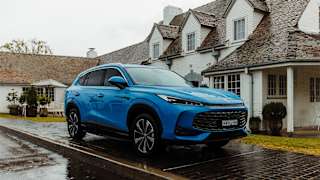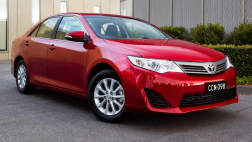A rear-impact airbag has just been developed by Toyota and will hit the road when the company's newest baby car, the iQ, goes into full-scale production.
The four-seat iQ is being previewed at the Tokyo Motor Show and is already approved for Japanese and European showrooms with a production rate of about 100,000 cars a year.
The iQ is closest in concept to the Smart ForTwo, with an overall length of less than 3m and a one-litre engine, but it is a four-seater and that is the reason for the airbag breakthrough.
“We adopted another airbag system,” says iQ chief designer Hiroki Nakajima. “It is rear-impact airbags. It is for rear-seat people. But there are some issues with certification.”
The system is an open secret in Japan, where Toyota has discussed the safety requirements for back-seat passengers with less than 30cm of protection space. But no one is talking about where it is located in the tiny hatch or how it is triggered, beyond similarities with side-impact airbag systems.
Nakajima says the rear-airbag system is part of work to ensure the iQ has a five-star NCAP safety rating. Airbag breakthrough aside, Nakajima says the iQ is not just a toy car.
“It is not just a small, cute, cheap kind of car. “It's far more mature and it's important that people understand the concept,” he says.
“Technically we are almost ready. We are already there in the sense that we have completed the necessary components to achieve our concept of having a car less than 3m long and that carries four people.”
But there doesn't appear to be much chance of the iQ making it to Australia.
“At this moment the target is Europe and the Japanese domestic market,” says Toyota Australia chief product planner Doug Soden. “If the response is very good, of course I will talk to the sales guys. I don't think at this stage there is a market for it. It's just a little bit too small.
“It's not going to be a very cheap car. It's under Yaris size, but it's not under Yaris price.”
However, Soden says Toyota is looking at the future motoring needs in crowded Australian cities. “It might take a while for that sort of car to be what we need in Australia,” he says.
“There need to be restrictions on which cars come into the major cities. You would go nowhere near with it in cities such as Brisbane, Perth and Adelaide. There is no need in their traffic.”
And he also says it will take time for Australians, even youngsters from Generation Y, to accept such small vehicles and engines.
“Australians need to get over the worry about one-litre engines. The modern-day one-litre engines are well into the 60kW area and they could be fine,” Soden says.
Would you consider driving a one-litre engine? Let us know in the comments below.






_0.jpg)

.jpg)
.jpg)




_0.jpg)


.jpg)
.jpg)
.jpg)





.jpg)


